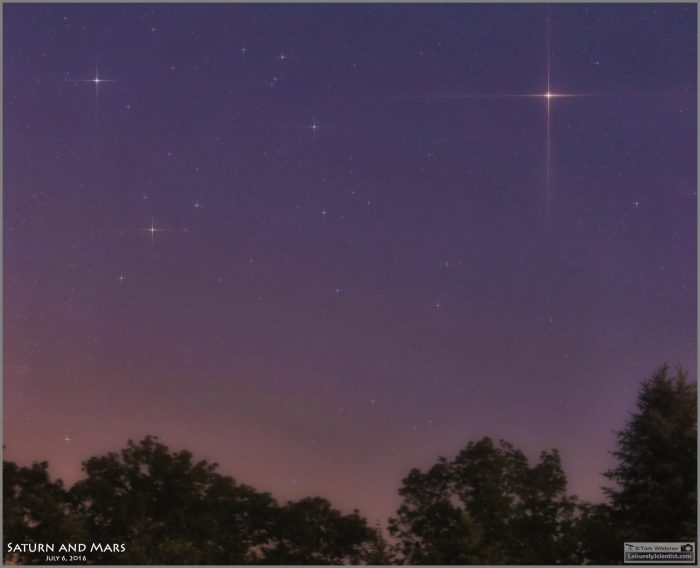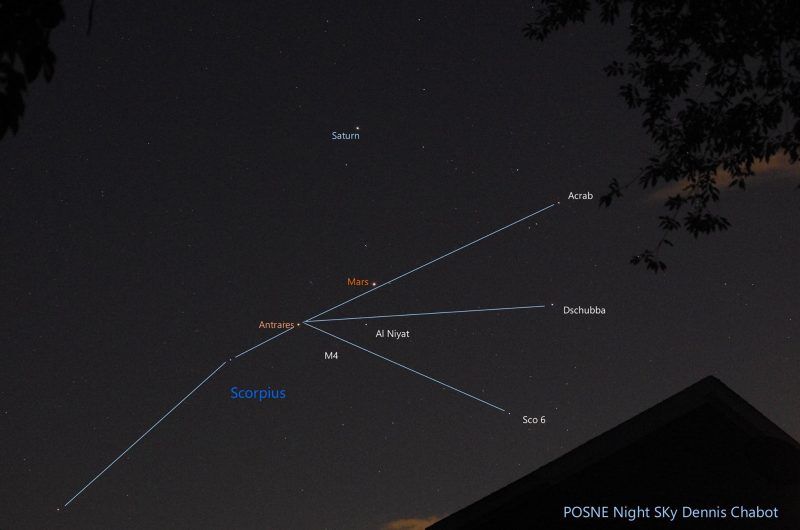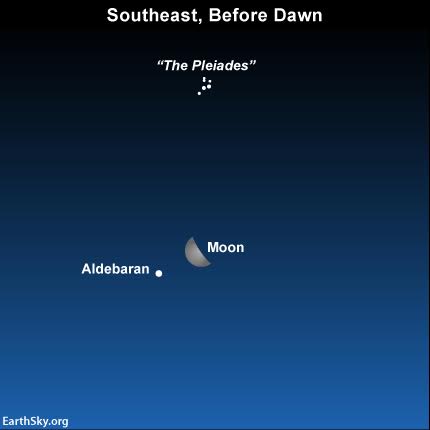Tonight and tomorrow night – Tuesday and Wednesday, August 23 and 24, 2016 – the red planet Mars is passing in between the planet Saturn and the bright star Antares. That’s after seeing them for months in a triangle pattern on our sky’s dome, then watching the triangle get narrower and narrower as Mars has shifted eastward. Over the next couple of nights, the threesome forms a straight line (or very nearly so) on the sky’s dome as darkness falls.
A conjunction is an alignment of objects on the sky’s dome. Mars and Saturn are said to be in conjunction wherever these two worlds lie due north and south of one another in our sky. This happens on August 24.
Conjunctions of Mars and Saturn aren’t particularly rare. Mars’ orbit around the sun takes about two years, so conjunctions happen about that often. The last conjunction of Mars and Saturn happened on August 27, 2014, and the next one will take place on April 2, 2018.
But this 2016 conjunction of Mars and Saturn is a very nice one! The planets are well placed for viewing in our sky, and they’ve formed this wonderful triangle across many months with Antares.
Now the triangle is more like a line in space.


The name Antares means “like Mars,” probably because of the similarity of color between the red planet Mars and the ruddy star Antares. But you’ll have no tMars is the brightest of these three bright starlike lights, with Saturn ranking second and Antares third.
Sky watchers claim that planets tend to shine with a steadier light than the twinkling stars. Check out the planet Mars and the star Antares in these next few nights to see if this rule of thumb holds true.
At mid-northern latitudes, Mars, Saturn and Antares appear in the south to southwest sky at nightfall. From the Southern Hemisphere, the threesome is found high overhead as darkness falls. But from either the Northern Hemisphere or the Southern Hemisphere, all three colorful celestial objects – Mars, Saturn and Antares – will move westward across the sky throughout the night. Depending on where you live, they’ll finally set beneath your southwest horizon by late evening or after midnight.
At present, both Mars and Saturn are moving eastward relative to Antares, a key star of the zodiac. However, Mars in its smaller and faster orbit travels much faster through the constellations of the zodiac than does the distant and slow-plodding Saturn.
After only a week’s time, Mars will be noticeably to the east of Saturn and Antares in the evening sky. Don’t miss them!
By the way, if you happen to be a night owl or an early riser, check out the chart below:

Bottom line: On the nights of August 23 and 24, 2016, watch for Mars to sweep in between the planet Saturn and the star Antares.












